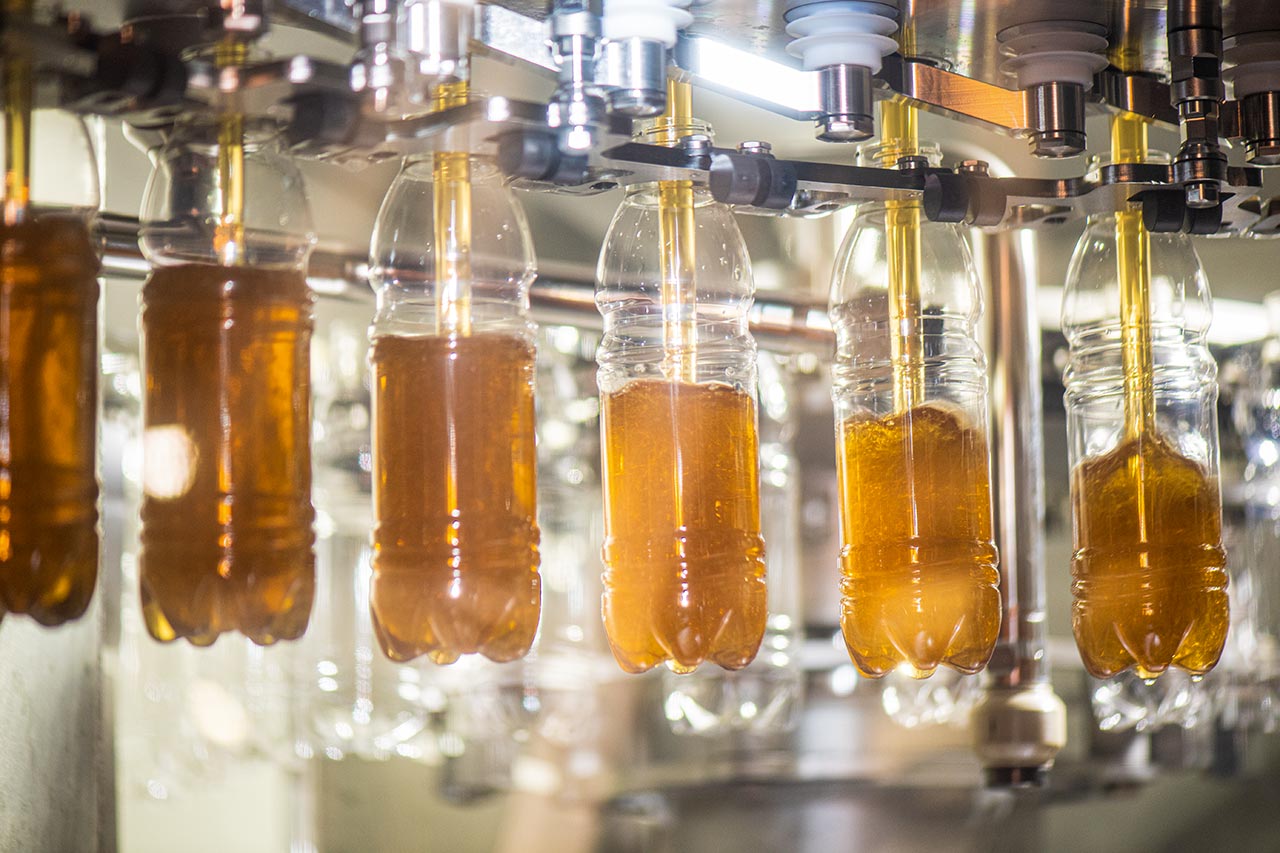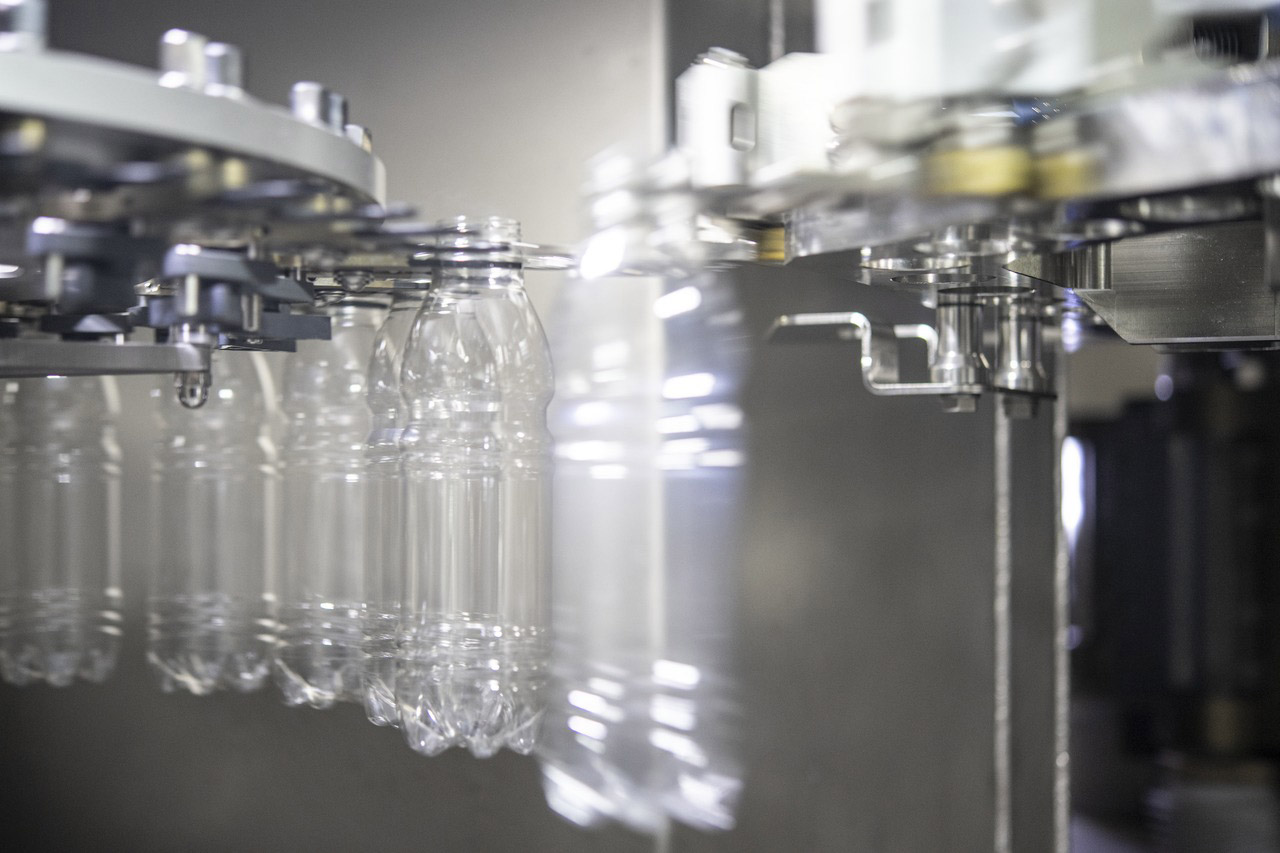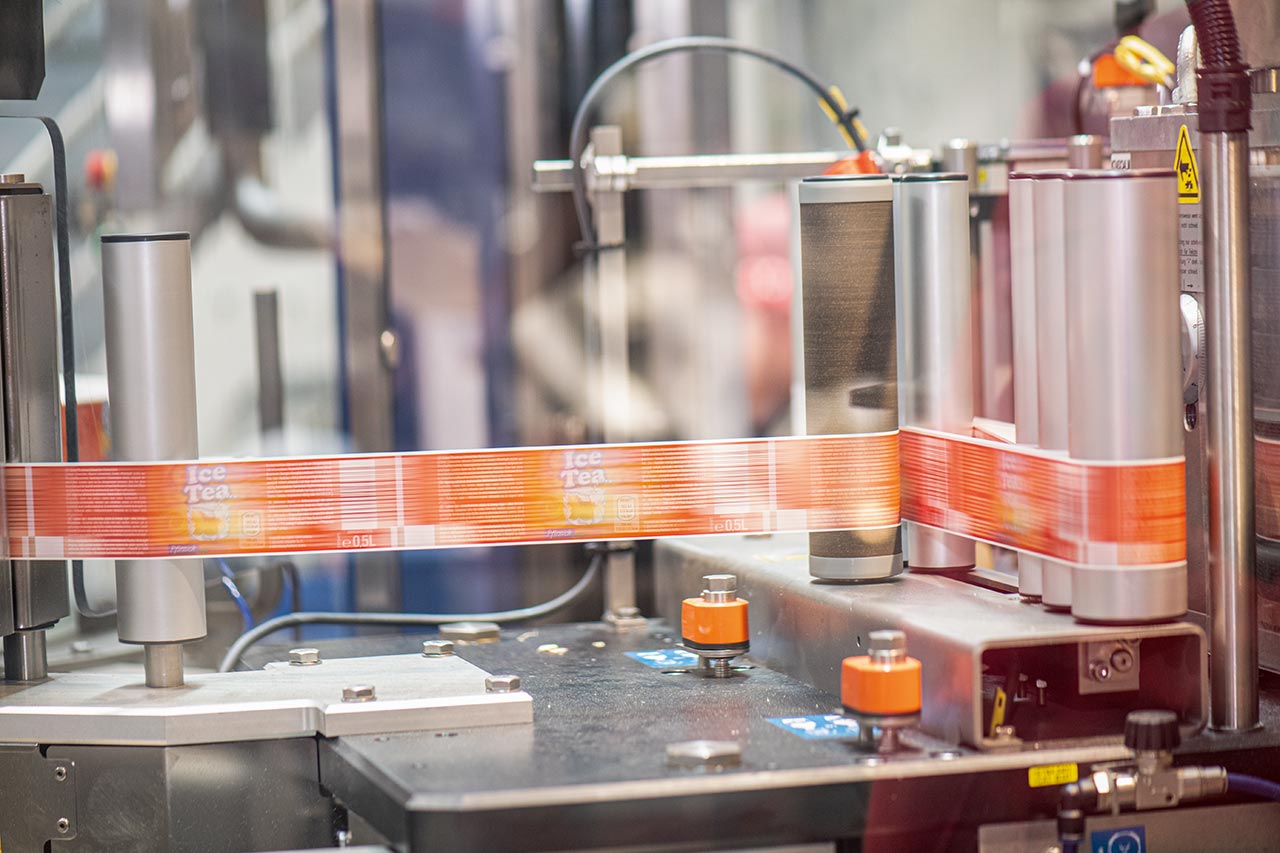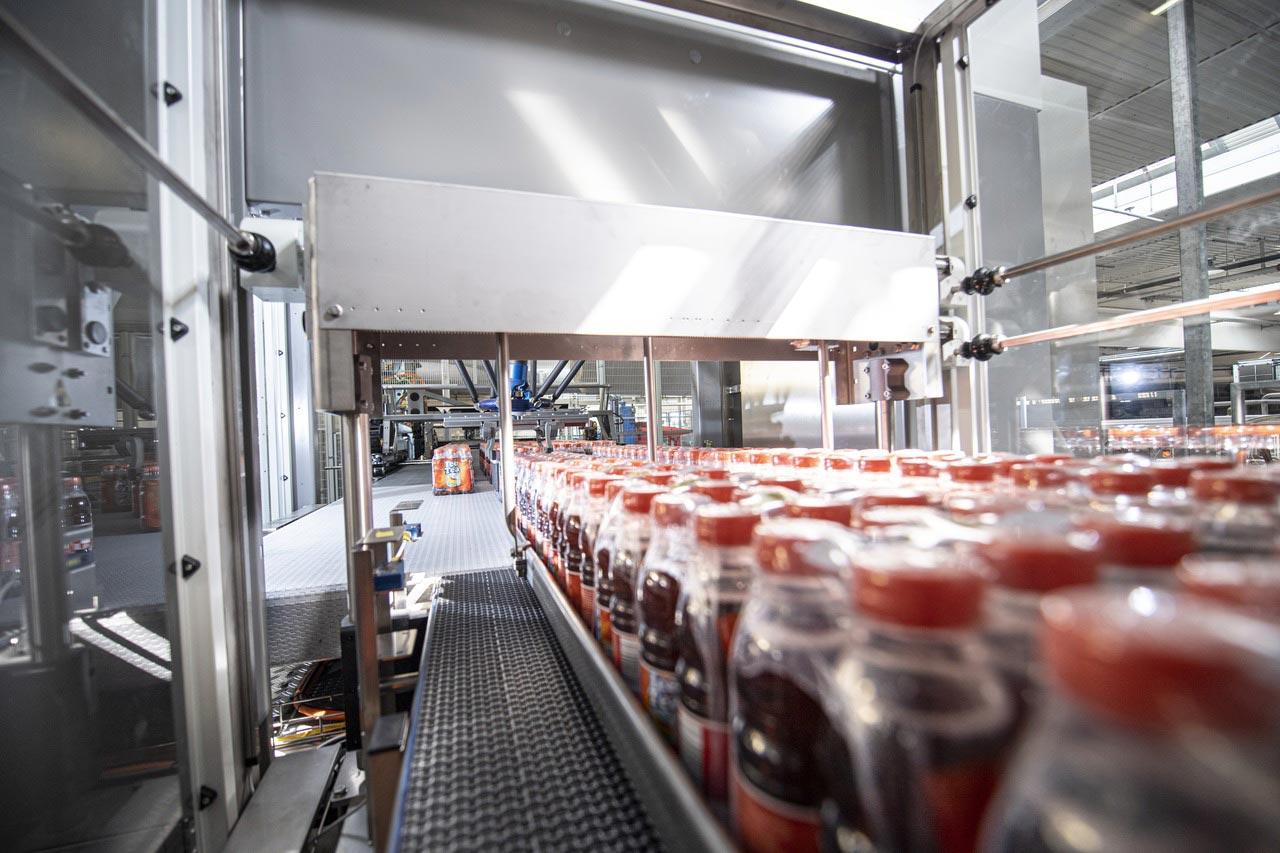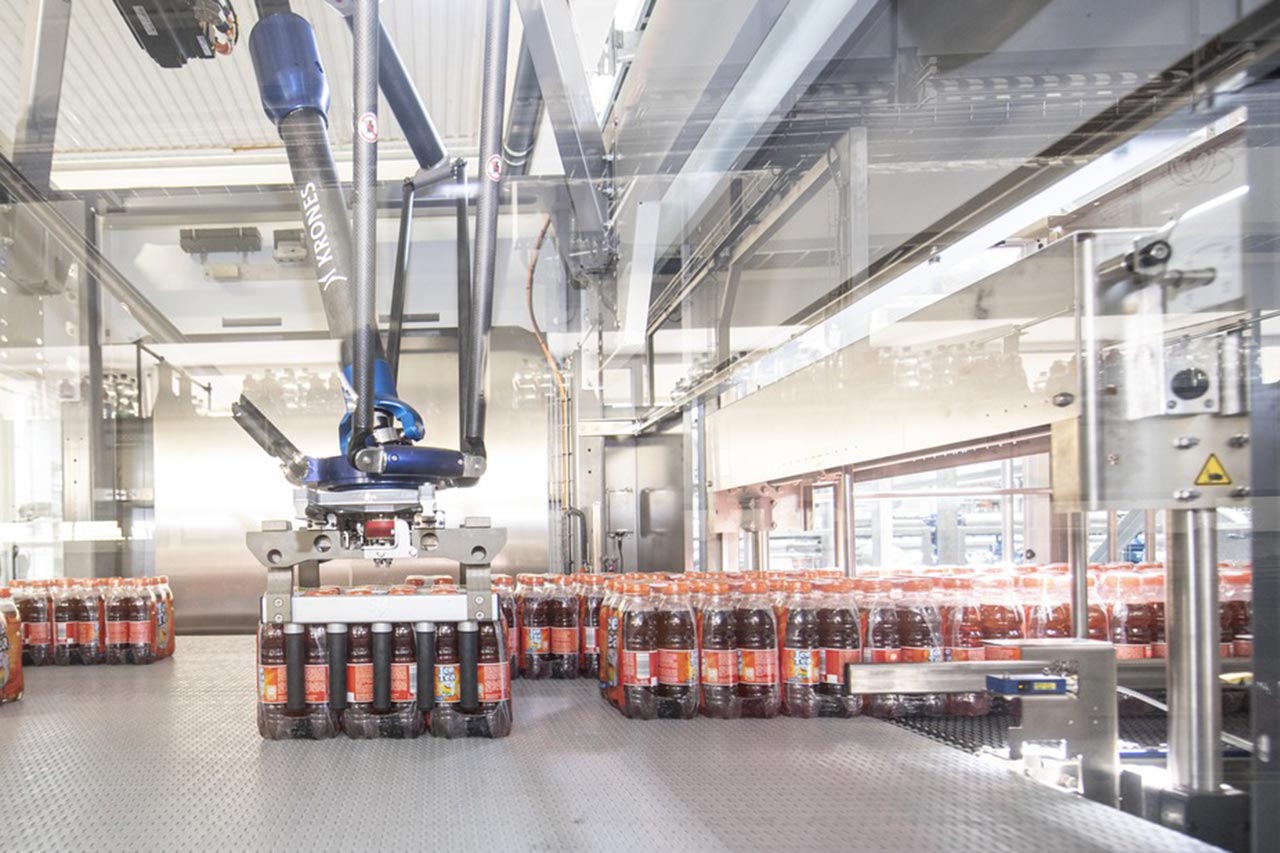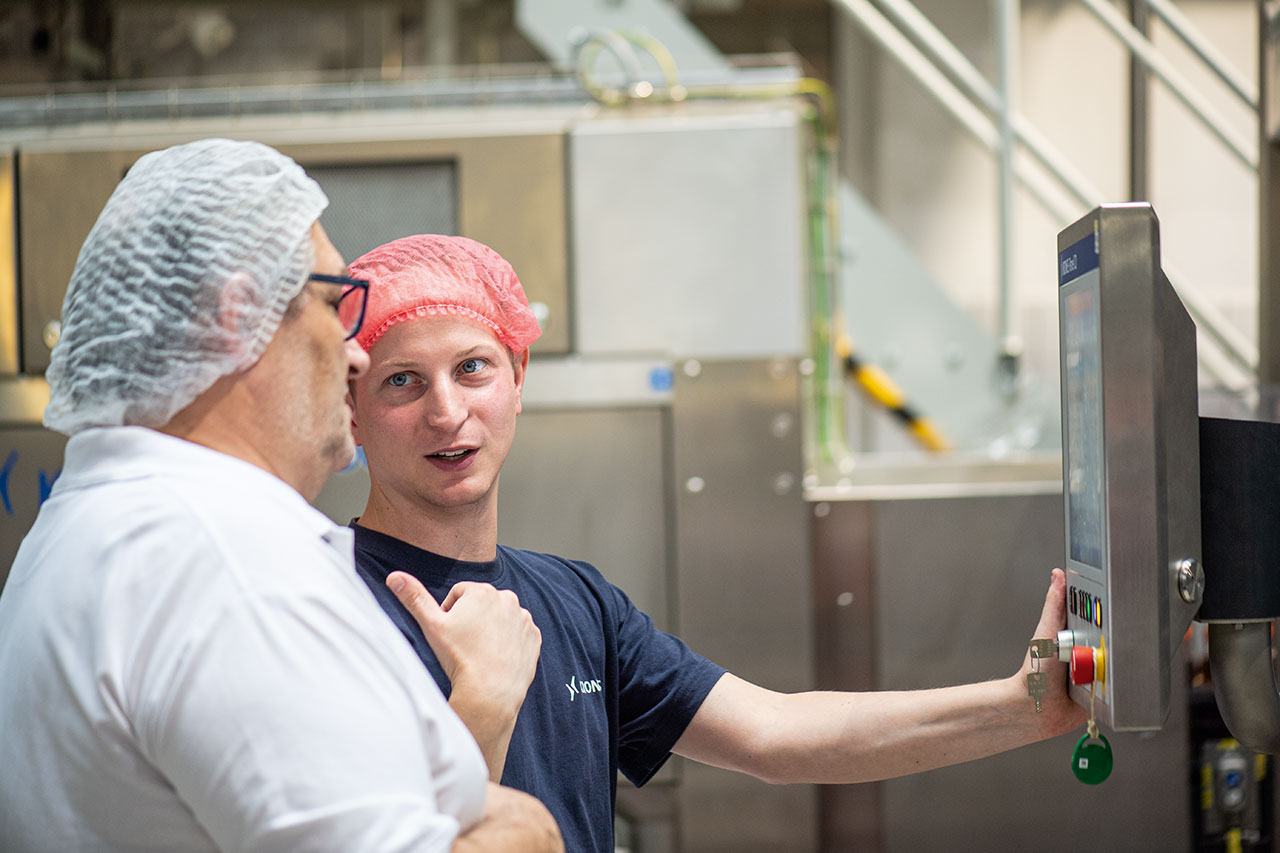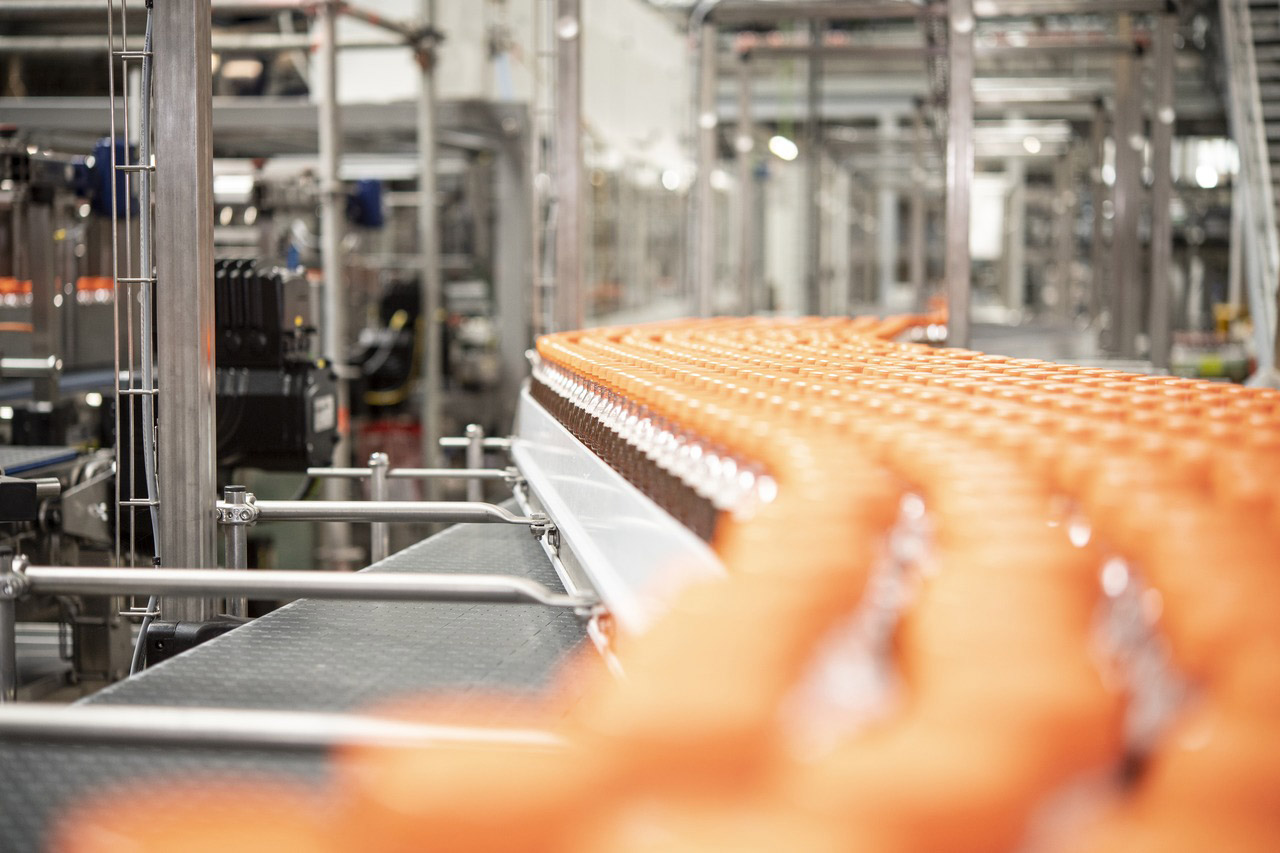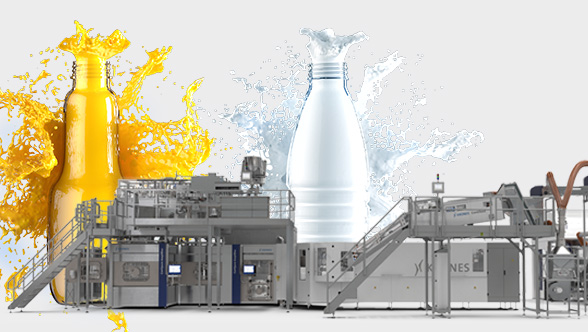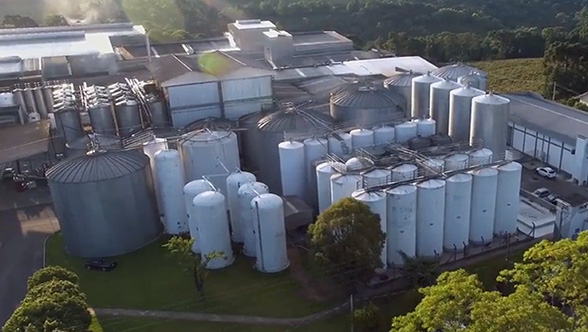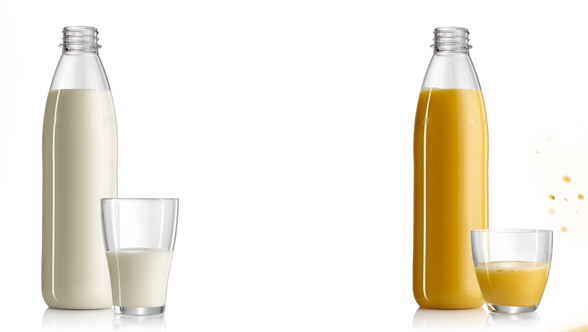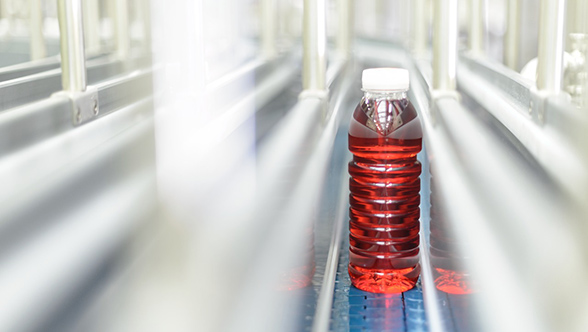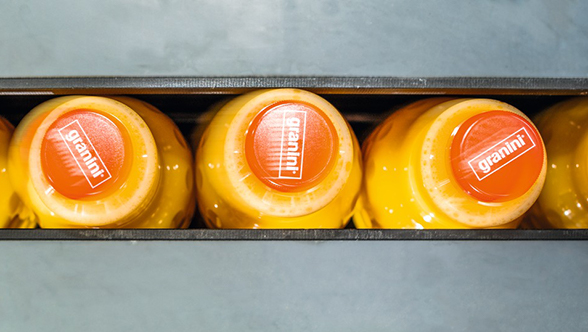Although Spitz was already familiar with Krones’ aseptic technology, in terms of process technology the new line differs from the existing wet-aseptic variant: the Contipure AseptBloc DN sterilises the preform’s entire surface in dry mode, using gaseous hydrogen peroxide. “This enables us to do without a rinser, which means we’ve been able to significantly reduce our water consumption and also the amount of wastewater created in the production operation,” says a gratified Markus Kröpfel, Technical Director at Spitz. Blow-moulder, filler and capper are in fully aseptic design and directly block-synchronised with each other. This guarantees not only a compact layout but also a high level of microbiological process safety.
“We already had some experience in aseptic production, which in the initial phase, particularly, was definitely an advantage for our people,” says Rudolf Holzinger, who’s responsible at Spitz for production in the Beverages Division, and Markus Kröpfel adds: “But every line is different. In order to understand the new machines as quickly as possible, one of our highly experienced production staff was involved in the project right from the start. Now he’s passing on his knowledge to his colleagues as a kind of internal trainer. In addition, we also drew up a training schedule together with the Krones Academy for line operators, electricians and mechanics.” In each shift, one employee looks after the aseptic block, one supervises the labeller and the packer, and one is responsible for the palletising zone and supplying the line with new preforms. Meanwhile, the new line is running in three shifts.


